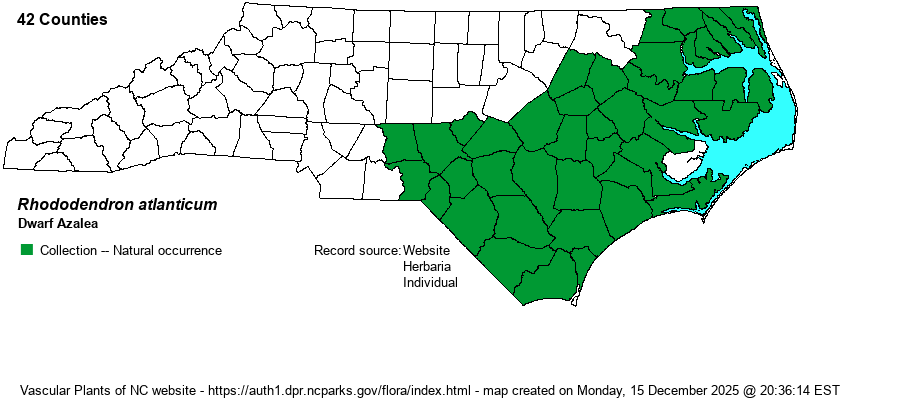| Author | (Ashe) Rehder | |
| Distribution | Nearly throughout the Coastal Plain, being scarce or absent only from the northwestern corner of the province.
Strictly on the Coastal Plain, ranging north to central NJ and south only to southern GA. Apparently absent in FL.
| |
| Abundance | Locally common (may occur in extensive colonies) over most of the range, but scarce in the northwestern portions of the Coastal Plain. More numerous in the southern half of the Coastal Plain than in the northern half. | |
| Habitat | This species favors “level ground” of moist pine flatwoods and savannas, but it also occurs in sandhill ecotones and other upland/wetland ecotones (usually in Longleaf pinelands). It can range into drier savannas, and into upland forests, but it is not found in overly dry, sandy or rocky forests. | |
| Phenology | Blooms in April and May, and at times later in summer and fall (if the site has been burned during the year), typically just before or as the leaves emerge; fruits from August to October. | |
| Identification | This is a quite low-growing deciduous shrub, ranging only to 1-2 feet high. As it grows in extensive colonies, it can often be identified by its growth form – a shrub often just knee-high with clustered, obovate leaves. When in bloom, it shows an abundance of white to light pink flowers, typically before or just as the leaves are emerging. A large stand in bloom is quite memorable. However, biologists can easily overlook this species when not in bloom, and especially where it does not occur in large stands. | |
| Taxonomic Comments | None
| |
| Other Common Name(s) | Coastal Azalea, Coast Azalea | |
| State Rank | S5 | |
| Global Rank | G4G5 [G5] | |
| State Status | | |
| US Status | | |
| USACE-agcp | FAC link |
| USACE-emp | FAC link |

